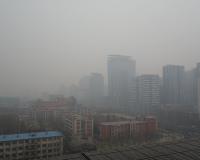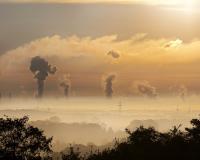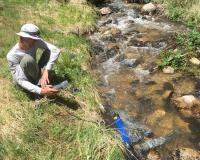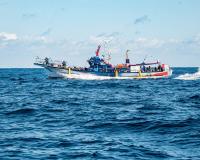
Vibrant Environment
All | Biodiversity | Climate Change and Sustainability | Environmental Justice | Governance and Rule of Law | Land Use and Natural Resources | Oceans and Coasts | Pollution Control

Nearly four billion people worldwide are under government mandates to socially distance themselves from one another in order to “flatten the curve” of COVID-19. Non-essential workers are hunkering down at home, bringing the daily commute and air travel to a virtual halt. The resulting decline in air pollution is stunning, visible even in satellite images.

In “Animal Agriculture Liability for Climatic Nuisance: A Path Forward for Climate Change Litigation?,” Prof. Daniel E. Walters lays out a new path for climate litigation: environmental litigators should bring federal public nuisance suits to remedy environmental harms caused by animal agriculture.

Drinking water contamination in Flint, Michigan, has garnered nationwide attention, but it is neither isolated, nor a primarily urban problem. As Madeline Kane explains in the April issue of ELR—The Environmental Law Reporter, a hidden water crisis is straining thousands of smaller communities that share Flint’s risk factors—shrinking populations, social marginalization, and deficient funds.

It is now half a century since the first Earth Day. Not only did I help run our school’s “teach in” in 1970, it is also 50 years since my entrance into environmental journalism. A first-person history may help to affirm the importance of the environmental protections that soon followed, as well as of a robust student press to push today’s issues.

Have you ever heard about the Svalbard Global Seed Vault? It might look like something from the future, but this very important structure can be found today roughly 1,300 kilometers (about 800 miles) north of the Arctic Circle, blasted 130 meters (roughly 430 feet) deep into a mountain. Designed to withstand doomsday scenarios, what valuable treasures might such a building hold? The answer is simple but may be surprising: seeds!

Since China strengthened its environmental enforcement efforts in 2014, the quality of the country’s environment has been gradually improving. At the same time, however, many regulated businesses are finding it difficult to comply with the increasingly stringent local environmental standards imposed by local regulators.

Over the past few years, considerable energy has been devoted toward advancing environmental justice (EJ) at the state level. State agencies can be robust laboratories for experimenting with ways to advance EJ, as they’re often tasked with making decisions under state and federal environmental law. As EJ pioneer Charles Lee explains in the March issue of ELR—The Environmental Law Reporter, state lessons can cross-fertilize and inform work at other levels of government, and the role of nongovernmental players is also critical to driving transformative change. Lee believes it is essential that those working to advance EJ systemically expand their discourse.

With its vast land and sea territory spanning 9.6 million square kilometers (3.7 million square miles), China is one of 17 mega-biodiversity countries in the world. It is home to nearly 10% of all plant species and 14% of all animals on earth. Protecting China’s uniquely rich biodiversity is therefore paramount to the country itself and to the entire world.

Citizen science—the gathering of environmental data by non-professionals—has taken root across the United States and internationally. However, much of this activity has focused on public awareness and education; the connection to government agencies is less publicized.
At the request of EPA, ELI is investigating how state, tribal, and local environmental agencies are using citizen science in their work. We have found a tremendous diversity of approaches, from programs organized and led by government to cases in which agencies are the end-users of information gathered by others such as community groups. We have also found some areas in which contributions by members of the public could be of great value to state or local environmental programs.

How do you regulate something as extensive and vast as the ocean? Its deep blue waters expand around the globe and contribute significantly to our life on land. The ocean provides us with a source of food, oxygen, and climate regulation, all of which contribute importantly to the global economy.